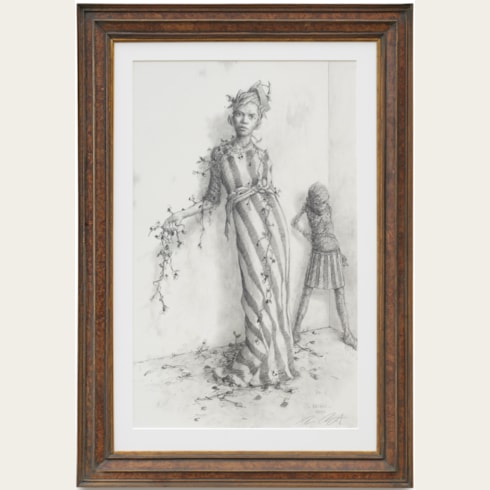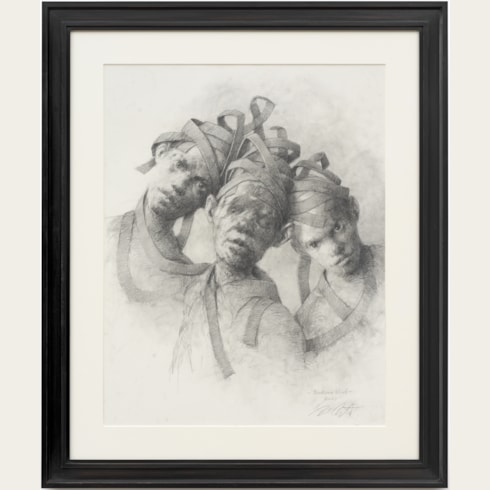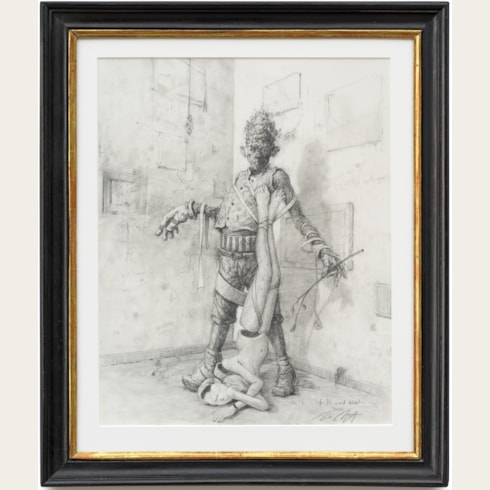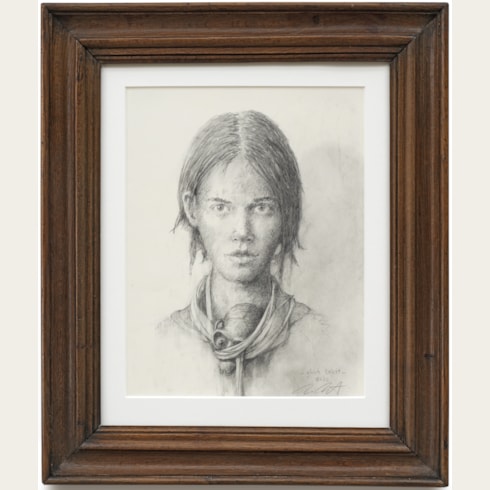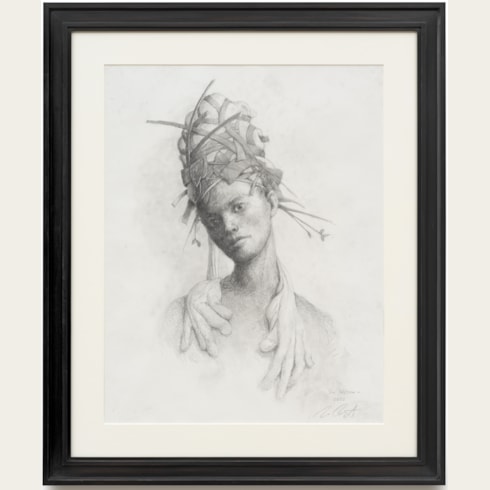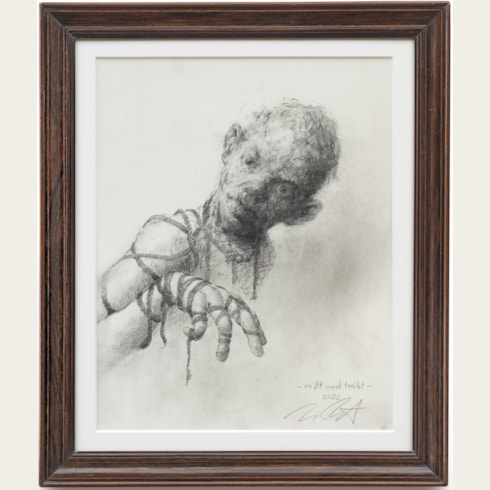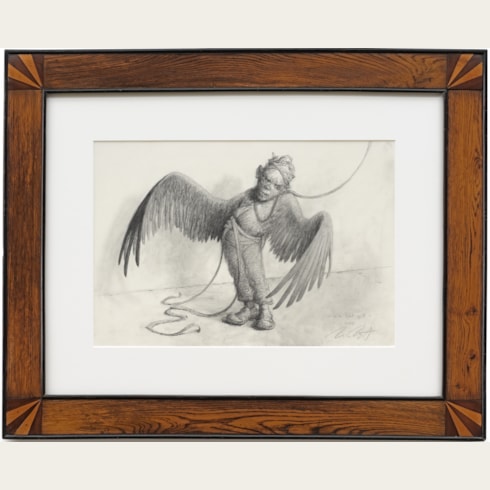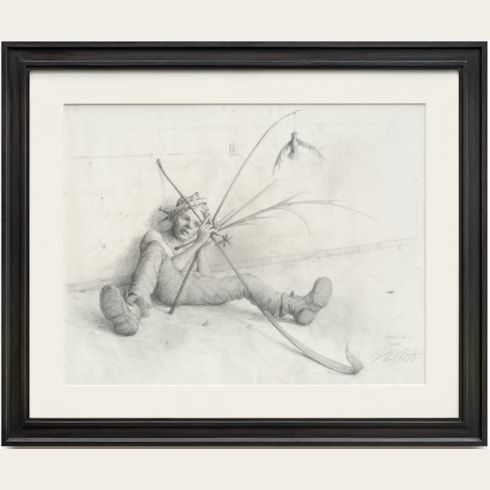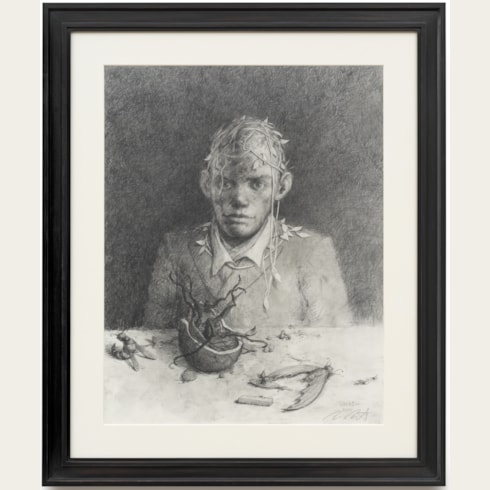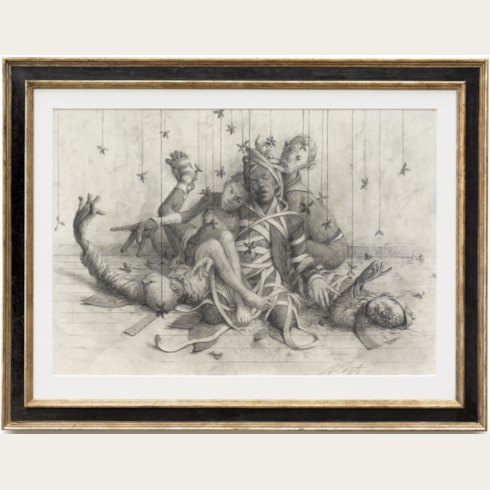Jonas BURGERT
(West Berlin 1969)
Anhaft
Signed, titled and dated 2022 at the lower right.
700 x 570 mm. [sheet]
94 x 81 cm. [framed]
Although Burgert is known predominantly for intensely coloured, life-size figurative paintings, often on a very large scale, his drawings reveal the intricacy of the artist’s character studies in black and white. Densely populated tableaux are how Burgert explores non-linear storytelling. Often created at the same time as these expansive pictorial dramas, the subjects of his individual portraits are exiles from the main story, isolated within their own frame. Untethered from a central narrative, they become newly enigmatic, each alluding to its own particular mysteries. Burgert is interested in the personification of psychology through figurative painting and it is his ongoing close observation of human emotion that gives his characters such a potent charge. As one writer and curator has commented, ‘[Burgert] primarily works on large-scale paintings inhabited by objects, animals, people and whimsical entities that disintegrate and constantly mutate. Tiny people and gigantic creatures spill out of cracks, perish between petals or sink into dull sheets; scraps of clothing without bodies to wear them; eyes staring into the void. Burgert’s paintings elude straightforward interpretation, they explore a higher reality and invoke the end of the world through personalities with multiple inner lives…A constant need to portray hope and failure, beauty and confusion, prevails. Through his paintings, the artist strives to create spaces dedicated to the spiritual representation of ourselves – so that the observer is transformed into a creature, a figure within this painted reality...Jonas Burgert’s work is dominated by restlessness, it abounds in imagination while conveying authentic inner realities and energy.’
Provenance







